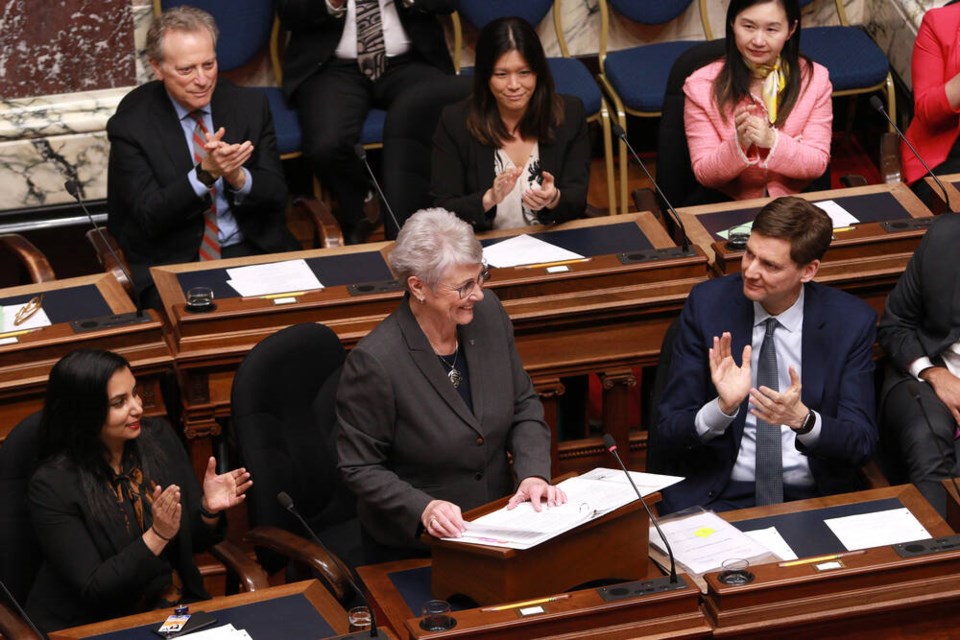Provincial Finance Minister Katrine Conroy faced an uphill battle with Tuesday’s budget. At the outset she had to acknowledge how the previous year’s version went wrong.
Her predecessor began last fiscal year predicting a staggering $5.5 billion deficit. Midway through the year she revised that in the opposite direction to an equally staggering $5.7 billion surplus, a swing of more than $11 billion in less than 12 months.
Now it fell to Conroy to announce that the surplus last year has fallen once more, this time to $3.6 billion.
The impression which emerges is that bottom lines and financial targets are not a strong point of this government. More of that in a moment.
As expected, budget 2023 includes additional funding for healthcare ($3 billion), around $1 billion more for housing in the year ahead, and modest increases in law enforcement.
In July the B.C. Family Benefit, paid to moderate and low income families with children, will increase by 10 per cent. And last year’s temporary affordability credit is being extended to offset inflation, with income-tested payments of up to $410 for a family with two children.
There is of course a price to be paid for this additional spending. Conroy forecasts a deficit this year of $4.2 billion, $3.8 billion next year, and $3 billion in year three.
Those are dispiriting numbers, and they pose the question, raised above, whether fiscal discipline is anywhere on the government’s radar screen.
Some context. Since the NDP took over in 2017, spending has increased by 57 per cent.
Likewise the public service has expanded by close to 30 per cent.
In themselves these figures are meaningless. But they take on shape if placed alongside external benchmarks for comparison.
Over the same period the economy grew by only 15 per cent, and the province’s population by around six per cent.
Across both of those base lines then, it’s fair to say that government operations have been extensively widened.
Some of this can reasonably be put down to COVID-fighting measures, and much needed steps to address deficiencies in housing and healthcare.
Nevertheless growth of this sort, if allowed to continue unchecked, represents a challenge to long-term sustainability.
We had a good example of the Eby administration’s approach to money management in the way the premier ploughed through a large part of last year’s temporary surplus.
That good fortune had nothing to do with thrift and frugality; it was mainly due to factors beyond the government’s control, including booming oil and gas revenues and income tax receipts.
Nevertheless the money was spent with little thought for the future.
And now we see the result, with deficits once again forecast to the horizon.That prospect must be weighed against the imminence of next year’s election
Governments traditionally economize in mid-term budgets, then splurge as they approach the campaign. But with $8 billion in deficits already forecast for the next two years, where would a pre-election binge leave us?
In passing, it’s worth noting that none of the premier’s pre-budget spending announcements have been approved by the legislature, supposedly the guardian of the public purse.
The overall picture that emerges from his short term in office is that the premier is dissatisfied with the rate of progress that his predecessor John Horgan oversaw.
He’s impatient, and ready to push through a fast run agenda, leaving the future to take care of itself.
Notably Glen Clark, an earlier holder of that office, pursued a similar strategy when he took over from the more judicious Mike Harcourt.
David Eby might want to recall how that turned out.
>>> To comment on this article, write a letter to the editor: [email protected]

